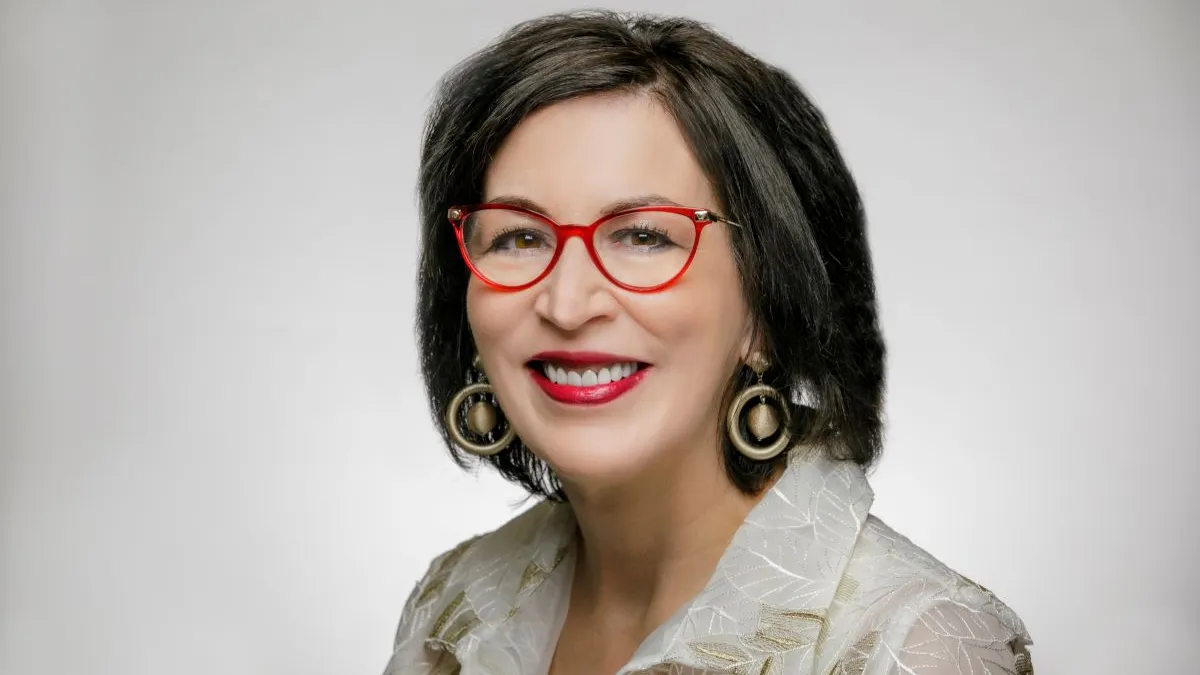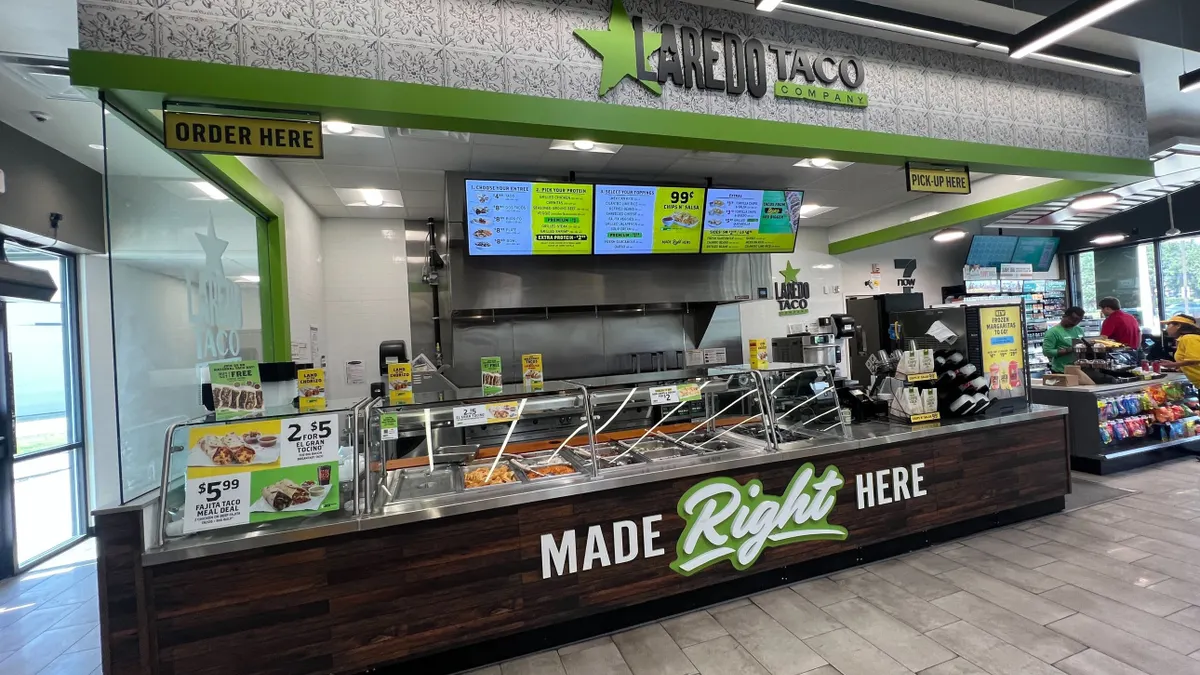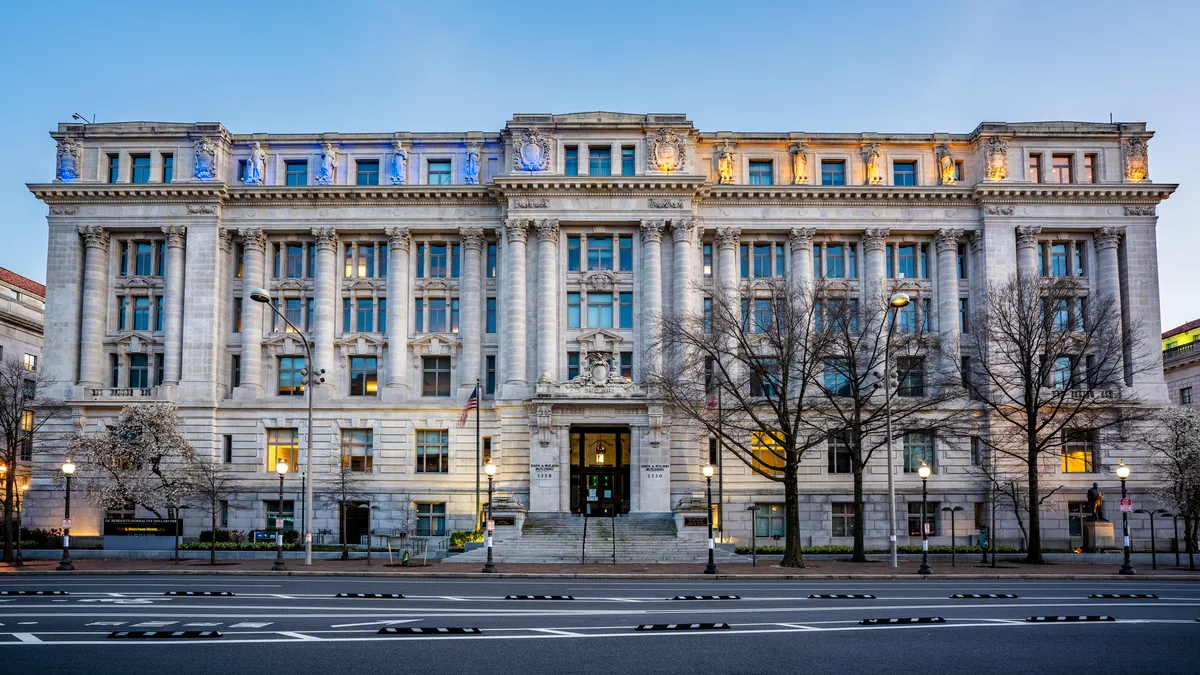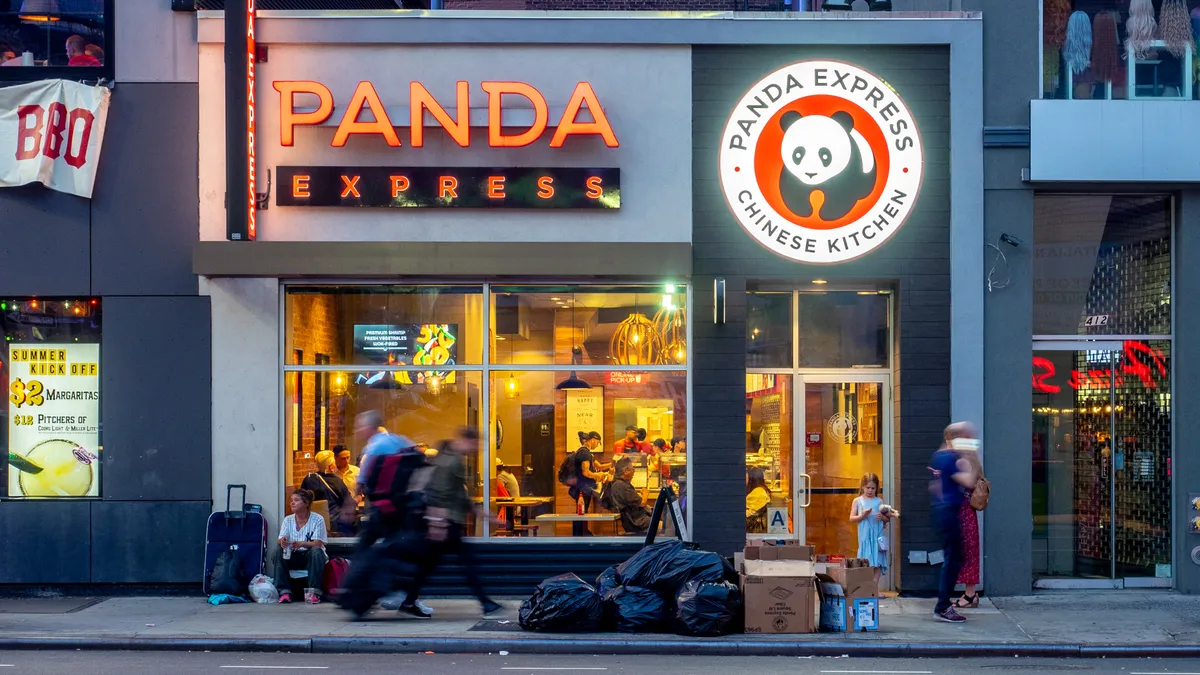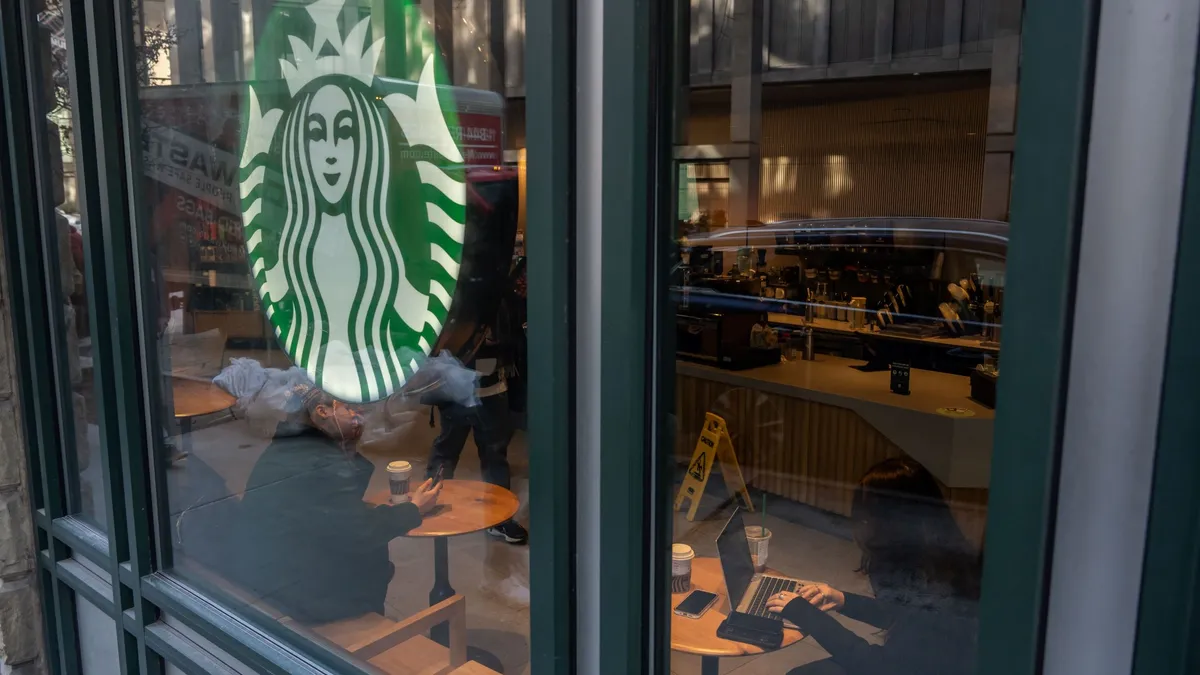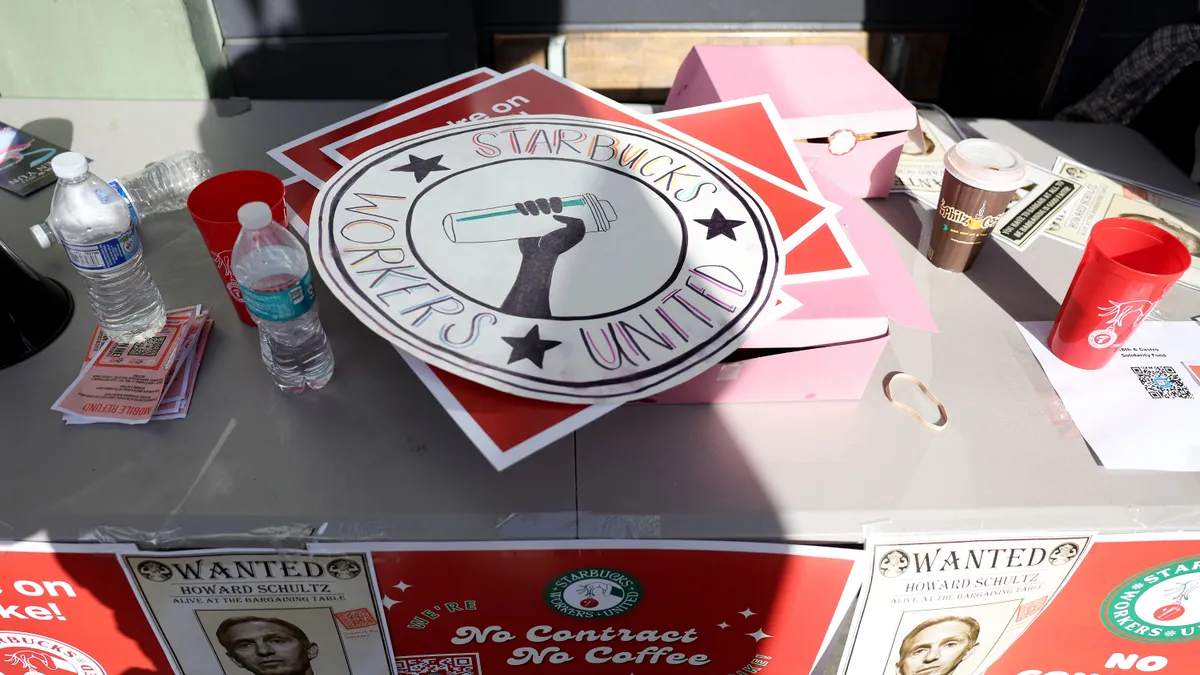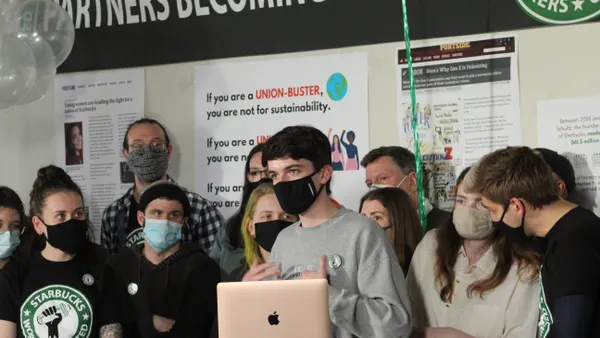From rolling out a new parental leave policy to adopting Workday’s HR system, Dine Brands Chief People Officer Sarah Cannon-Foster had a busy first 100 days at the company. She joined Dine Brands in April after seven years at Walgreens Boots Alliance and nearly two decades at Starwood Hotels & Resorts Worldwide, now Marriott International.
In September, Cannon-Foster launched Dine Brands’ Parent Transition Program. This benefit allows new parents to work from home for 90 consecutive days after their 12 weeks of leave and before they resume a full-time office or hybrid schedule.
The benefit was born through discussions in the Women@Dine group, one of six team member resource groups at the company. These cohorts meet regularly, with Dine Brands’ CEO in attendance. The Parent Transition Program concept was proposed by the group to top executives, who gave it the go ahead, Cannon-Foster said.
“It’s truly just an extension of our culture being able to provide parents the grace to get acclimated,” she said. “It provides the opportunity for our team members to come in and be welcomed back, … meeting them where they are and doing it on their own terms.”
Restaurant Dive spoke with Cannon-Foster about the impact of team member resource groups at Dine, what she has learned about the corporate culture and how she and other executives are working to support employees and franchisees at all levels.
Editor’s note: This interview has been edited for clarity and brevity.
RESTAURANT DIVE: How did your experience at Walgreens help inform you in your current role at Dine Brands?
SARAH CANNON-FOSTER: I had the opportunity to broaden my HR perspective. I rotated through five different roles while I was there. It allowed me to better understand a very large organization on a global scale that’s highly matrixed, in which teams report to multiple people. I learned how you collaborate, how you work through and influence various stakeholders. I think that that's been key.
Having led the HR transformation for a three-year run, it really gave me an appreciation of the challenges that people are faced with when asked to transform and asked to dive into change. I think all of those elements — broadening my HR perspective, being able to cross-functionally work across in a matrix environment and also leading the change management efforts there — will serve me well here.
What are some of your goals for creating a collaborative environment between HR leadership, franchisees and other teams at Dine Brands?
I wanted to be very mindful that, while I very much understand hospitality, I took nothing for granted coming here. I needed to do that and earn trust by listening carefully to the needs of our team members, our board, our franchisees, our brand leaders and my own team. I need to figure out what's important to everybody and build my HR strategy for the remainder of 2023, and then into 2024.
We have a foundation that has trust. That’s just not an anecdotal view. We have our engagement survey, Great Place to Work. When I see trust, that is a very healthy sign for any organization. You could do a lot with trust. My and my team’s strategy is to continue to support an innovative growth mindset and how we in HR can enable that, by looking at how we maximize our talent and unleash the potential of our team member resource groups. We’re just getting started. I can't wait to see the runway.
Then, finally we’re going to take a look at our operational brand excellence. How are we going to help our general managers? How are we going to create value from Dine and provide the ability to share practices and to be able to learn from each other in our brands that are distinct? How can we provide support in that space?
Why do you think trust is so important in an organization?
Trust in an organization creates a gateway of people feeling open, being able to take risks. We have that organically in the organization. That is something that we will continue to preserve and we will continue to leverage. Never take [trust]for granted, but also to be able to earn that as senior leaders each day with our teams.
What are some of the strategies you have in mind for maximizing talent?
Our talent wants career roadmaps. They want to be able to see and realize what their potential is. We are going to be here to help unlock that. When I would look at my role as a chief people officer, I'd say I'm the chief steward of talent. And when we look at that, and we identify, and we bring in great talent, that's a huge responsibility, and one that I take, along with my team, very seriously. We have to determine how we help you get from A to B, and let you realize your fullest potential, all whilst creating that sense of belonging. We will do that through development plans. We will do it in a way that is co-architected with that individual along with their leader.
What else have you learned so far about the ways to develop talent at the corporate level?
I go back to our team member resource groups, and what is so unique here. I’ve seen business resource groups in other organizations, and there's something very special here. They were born during the pandemic, meeting virtually. We have six team member resource groups, all key initiatives taking place. I really feel that it creates a sense of vulnerability. It creates that sense of trust, and allows for people to lean in and say what’s on their mind, and how and where they want to be developed. We have SoulFood@Dine, Dine APAN, which is our Asian Pacific American network. We have Dine LINC, which is our Latinx and indigenous group. We’ve got DineOut with Friends, our LGBTQIA+ group, and we've got our Dine Young Professionals.
These groups are helped by the CEO and our senior leaders participating in calls and in initiatives. Working to educate within our organization, I think will be a key cornerstone for us as we continue to collaborate and grow talent.

How have you been thinking about diversity at Dine brands?
We are of a mindset to not only hire diverse talent, but also, more importantly, do the right work and be able to identify where there’s opportunities to grow pathways. We want to provide equitable access to promotions and opportunities, but we’re only going to get there by making sure anyone who’s interested can put their hand up, and making sure they feel they’ve got the right development, and the right career roadmap to get them there. It starts from the moment someone joins us, through their pathway with us in the organization. What are those interventions? What are those intersections? How can we continue to create that sense of belonging with our team member resource groups?
I would expect we’re going to grow more groups because that only further endorses a sense of belonging, and allows people to feel special and feel their potential. They feel a sense of control. That’s going to be very important as we continue to drive diversity with our team.
Why do you think diversity is so important at the corporate level?
We’re stewards of our team, of our talent. It’s important that when people look to join a company — that’s a risk on their side too — that they see themselves at every level of the organization. That’s why it's important. And to understand the prospect that they can get there, and making sure that we take full advantage of everybody at the various levels of the organization.
What would you say are some of the business challenges in building a diverse workforce from the top down?
I've really taken an eye at that through these first 100-plus days, and I can tell you with certainty, I don't see challenges here that I would see maybe elsewhere. Diversity is not just a word. It's coming through on the actions. When we have a CEO that attends our team member resource groups, and we have a take rate of hundreds of people that join a call to take an hour out of their day to be educated, and I see people at the senior levels leaning in and having vulnerable discussions, that tells me that we’ve got a really very good foundation. That is something that you can always continue to build from.
What are some of the initiatives that you've been taking on to help accelerate Dine Brands overall goals?
We have been doing quite a bit looking at infrastructure. We've just adopted a new system, Workday. We’ve been able to take that and really, from an HR perspective, create horsepower within that to give access to our teams, in order to be able to access information for themselves to be able to leverage and understand the work. That was a big effort by my team. We’ve got several milestones ahead, at least over the next year or two, and it will help us on many fronts from a technology perspective.


